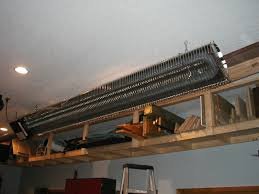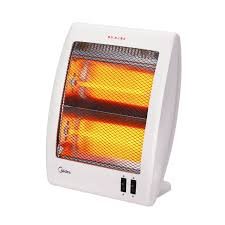Garage Heaters — How to Choose the Right Heater for You?
A garage is many things to many people. For some, it’s functional as a way to park their car in inclement weather or store decorations out of season. For others, it’s a sanctuary – a spot to toil with tools and enjoy beverages with neighbours. No matter what you use the space for, if it’s attached to your house, one thing’s almost certain; a heated garage is necessary in Edmonton.
Not having warmth in the garage limits the use to about half the year and can cause wear and tear to a vehicle or damage items stored there in the colder months. Now those garage heaters are the go-to route established, let’s look at how to warm them.
1. Insulate the Walls
The first thing a homeowner should do if they want to heat their garage is to insulate the walls and ceiling and finish them with some sheetrock or panelling. Insulating the walls will help keep some of the wind and cold from seeping through to the inside, but it’s also essential if you ever want to install any garage heater in your garage.
You can install a few different types of heaters in your garage space, but you’re wasting money and efficiency by running them without at least wall insulation. The cold external air will suck all the warm air out, and you’ll not only be losing money, but you’ll also fail to do the one thing you set out to do – create a cozy garage.
2. Ductless A/C Unit with Heat Pump
One thing to remember about insulating a garage is that it holds the warm air in and cold air if that’s what you choose. Most residents will open up the garage door to get a fresh air supply during the summer but depending on the layout of the garage and temps that reach the 30s, natural air might not suffice.
One way to provide both air conditioning in the summer and heat during the winter is by installing what’s known as a ductless air conditioner with a heat pump installed. The unit can mount high on the wall and serves both heating and cooling in one unit without taking up excessive space, something an electric space heater or an oscillating fan cannot claim.
Suppose your garage is attached to the house. In that case, ductless a/c units also contain zone cooling, where one outside compressor can run to four different rooms meaning you can also cool a basement, bedroom, or living room on the same power supply.
3. Overhead Radiant Heaters
One thing to remember about working outside on bitterly cold days is that all your heat will escape from the top of your head. What better source of garage heaters, Edmonton, than an overhead radiant heater?
These units are exceptionally resourceful because the heat comes from above. Further, the radiant heat focuses on warming a specific zone instead of the entire garage. You lose efficiency if other types of heaters try to make storage and 2nd car sides toasty, so why not focus on your workbench or tool area? Radiant heating overhead and foam insulation pad on the concrete below provide a comfortable workspace.
4. In-Floor Radiant Heat for New Garages
In-floor heating is very hard to retrofit, but when you’re in the building market, a new garage can be one of the best investments in your home. In-floor radiant heating tubes are built right into the foundation of a new garage, powered by hot water, electricity, or fuel. What makes in-floor radiant heating keep a garage dweller so warm is that the main barrier to the cold – the hard cement floor – is a hot asset keeping your toes cozy. On top of that, the heat rises, passing through your entire body before dissipating into the ceiling.
You can retrofit homes with in-floor radiant heating because a person can access the subfloor to install the components. Unfortunately, as with most garages, the sub-floor is a concrete foundation, and there’s not much manipulating you can do.
5. Electric Space Heater
If your garage sanctuary time in the winter is limited to fixing the snow blower or trying to work on an automobile, there’s no reason to spend a fortune on garage heaters. Instead, you can pick up an electric space heater or two for under $100, which can be plugged in and allowed to warm up, so they keep you toasty for the hour or two needed. Electric space heaters don’t put too much of a drain on your utility bills and can be stored on a garage shelf easily enough when they’re not in use.
6. Kerosene Torpedo Heater
If you spend a significant time in your garage during the winter, either because of hunting or enjoying some drinks after playing in the snow, you’ll want a little more intense heat source than an electric space heater. A kerosene torpedo heater fits that bill perfectly. You may have noticed these types of heaters on the sidelines of the Edmonton Elks during chilly weather. Kerosene is preferred since it burns cleaner. There will be some fumes, but it’s required to crack the garage door to get a fresh air supply. The cold draft is no match for the torpedo heater that can efficiently heat two-car, large garages. While kerosene can be hard to find in some locales, the alternative diesel is too odoriferous and will drive you out of the warm garage with its smell.
The frequency of your garage use and what you use the space for determines which type of garage heaters work the best. Perhaps it’s best to start small and inexpensive with some space heater to see if it gets used and eventually work your way up to a fully functional integrated HVAC.




